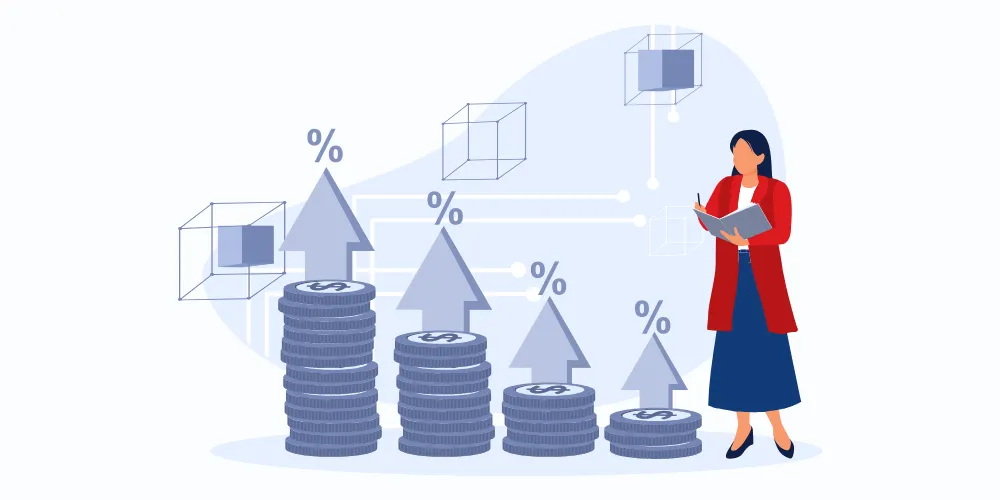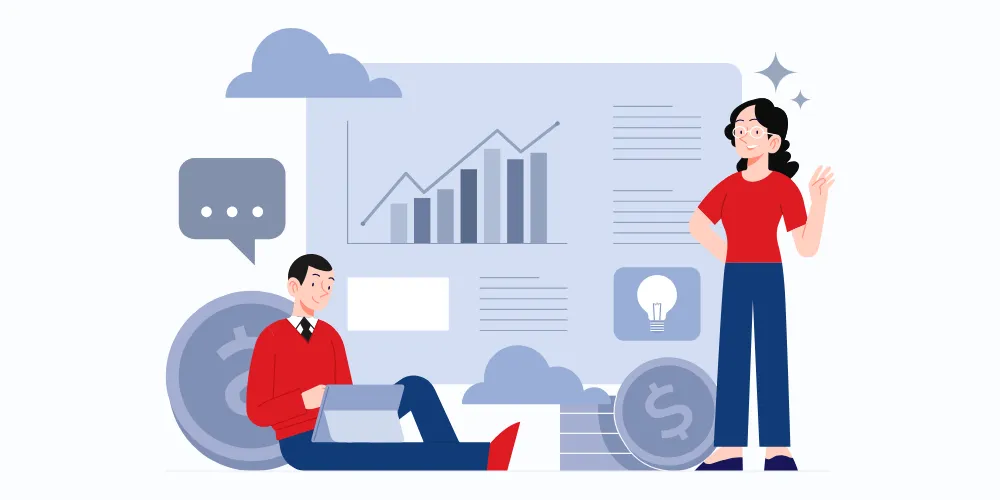Sales incentive management is the process of designing, tracking, and administering compensation plans that reward sales teams. It ensures alignment between sales performance and business goals, boosts motivation, and reduces errors or delays in payouts, making it critical for sustaining revenue growth and employee engagement.
How to Turn Your Fragmented Incentive Processes into a Unified Operating Model
- Amit Jain
- Aug 07, 2025
- 4 min read
- Last updated on Sep 29, 2025
Introduction
Sales incentive management is often treated as a back-office function, important but still peripheral. But when you zoom out, it’s clear that incentives are one of the most powerful (and undervalued) levers in the enterprise.
According to McKinsey, organizations that redesign their operating models across multiple interconnected dimensions can get uneven performance gains. In their framework, 12 interrelated elements define how an organization truly works and not just how it's structured on paper. They reveal how value is created, people are motivated, and systems operate at scale.
Let’s explore these 12 elements and examine how they apply to sales incentive management, then we’ll show you how Incentivate brings these concepts to life as a turnkey incentive operating model.
1. Value Agenda
McKinsey asks: The value agenda defines what matters most for the business. It aligns strategy with operational execution by clarifying priorities such as growth, profitability, customer retention, or innovation, and ensures resources are focused accordingly.
Incentivate answers: Incentivate transforms vague incentive goals into measurable outcomes. Executives get real-time visibility into whether incentive structures are accelerating or impeding core business objectives. No more generic payout files. This is dynamic, value-driven planning with ROI accountability.
CEO/CRO Value:
“Shrink the revenue execution gap by 30% without adding headcount”.
2. Structure
McKinsey asks: Structure is about how the organization is designed to deliver value, whether that’s via business units, geographies, functions, or product lines. An organized structure ensures clarity in roles, accountability, and performance measurement.
Incentivate answers: Sales orgs are anything but static. Whether you operate in pods, overlay teams, PLG models, or territory hierarchies, our incentive platform adapts to your structure. As teams evolve, changes automatically flow through credits, targets, and payout rules without manual rework.
3. Processes
McKinsey asks: Processes define how work gets done, how decisions are made, how information flows, and how consistency is maintained. Efficient processes reduce friction and build reliability.
Incentivate answers: Fragmented incentive processes are a known bottleneck, often involving spreadsheets, emails, and last-minute reconciliations. Incentivate replaces them with a streamlined, end-to-end workflow. From credit assignment to calculation, approval, payout, and performance analysis, every step is digitized and governed. SLA timers and audit trails ensure nothing slips through the cracks.
4. Technology
McKinsey asks: Technology in the operating model provides scalability, connectivity, and adaptability. It's the digital foundation that enables speed and efficiency across functions.
Incentivate answers:
Built on a cloud-native, API-first, and AI-powered architecture, Incentivate seamlessly integrates with your CRM, data warehouse, payroll, and other business systems. It can handle billions of records, making it suitable for even the most data-heavy sales environments. Moreover, AI-driven insights and simulations help teams forecast and fine-tune plans before making decisions.
CTO/CAIO Value:
“Incorporate enterprise-grade AI safely, including scenario forecasts, root-cause diagnostics, and plan-design co-pilots”.
5. Governance
McKinsey asks: Governance refers to how decisions are made and enforced. For example, who has the authority, what rules apply, and how exceptions are handled.
Incentivate answers: Incentivate embeds governance directly into the workflow. Role-based access ensures the right people see the right data. Rule changes are version-controlled, so you can audit who changed what and when. Scenario sandboxes allow you to test plan changes without affecting live operations. CFOs get one-click sign-off with centralized approvals and transparent workflows.
CFO Value:
“Turn incentive spend into a tracked investment, cut leakage by 3–5%”.
6. Rewards
McKinsey asks: Rewards are a key behavioral lever. When aligned properly, they drive focus, motivation, and sustained performance. When misaligned, they can erode trust or promote the wrong behaviors.
Incentivate answers: Whether you’re running fixed bonuses, variable commissions, MBOs, SPIFFs, or contests, Incentivate supports it all with multi-currency, multi-time zone, and role-based rule sets. Configure by geography, product, or segment, and forecast costs in real time to avoid overruns. Every incentive becomes measurable, adjustable, and aligned with strategy.
CHRO Value:
“Boost rep trust and retention with pay transparency and fairness in every plan”.
7–12. Supporting the Full 12-Element Fingerprint
While Incentivate directly activates six of McKinsey’s twelve core operating elements, it also supports and reinforces the remaining six, especially in behavioral and cultural dimensions:
Behaviors & Culture: With gamification, real-time leaderboards, and transparent earnings dashboards, Incentivate nudges desired behaviors and reinforces a performance-driven culture.
Leadership: Frontline managers get exception alerts, coaching triggers, and deal-level insights. They’re empowered to course-correct before things go off track.
People & Capabilities: The DIY plan builder and low-code environment enable sales ops, HR, and finance to own and evolve incentive plans independently, eliminating the need for IT or third-party consultants.
Metrics: Beyond compensation figures, Incentivate delivers plan health scores, goal attainment curves, and behavioral metrics, enabling deeper strategic analysis.
Footprint & Ecosystem: Through APIs, Incentivate integrates seamlessly with your HRIS, payroll, ERP, CRM, and analytics tools, ensuring it fits cleanly within your enterprise stack.
Agility: Sandbox environments, A/B testing capabilities, and scenario modeling tools ensure incentive plans can adapt rapidly to market shifts or internal changes.
Incentivate vs. Frameworks: Execution at Speed
Where McKinsey offers a strategic blueprint, Incentivate delivers a pre-configured operating model, purpose-built for revenue and people outcomes. It's the difference between theory and execution.
Instead of months of strategy decks, you get a live system where you can tweak, measure, and scale what works. Where governance isn’t a checklist, it’s a switchboard. And where incentives become your most agile, data-rich lever for growth.
Frequently Asked Questions
What is sales incentive management, and why is it important?
How does sales incentive management software improve accuracy?
Sales incentive management software automates commission calculations, credit assignments, and approvals, minimizing manual errors. It ensures that payouts reflect real performance and comply with defined rules, reducing disputes and saving valuable operational time. This improves trust and transparency between sales teams and leadership.
Can sales incentive management support different plan types?
Yes, modern sales incentive management systems support a variety of compensation structures like fixed commissions, variable pay, MBOs, SPIFFs, and team-based plans. They allow flexibility to run tailored programs across roles, regions, and business models without compromising control or compliance.
How does sales incentive management help CXOs make better decisions?
With real-time dashboards and forecasting, sales incentive management platforms offer CXOs visibility into cost, performance, and ROI. This enables data-driven decisions around plan design, territory alignment, and resource allocation, which turns compensation from a cost center into a strategic growth lever.
Is sales incentive management suitable for fast-scaling companies?
Absolutely. Sales incentive management tools scale with your organization, whether you’re expanding sales teams, launching new products, or entering new markets. Automation ensures consistency across a growing structure while enabling quick changes to plans without overwhelming your ops team.
How does sales incentive management reduce payout delays?
By automating workflows, from data collection to calculation and approval, sales incentive management systems eliminate manual bottlenecks. This speeds up the payout cycle, ensures SLA compliance, and enhances rep satisfaction by guaranteeing timely and accurate compensation.




